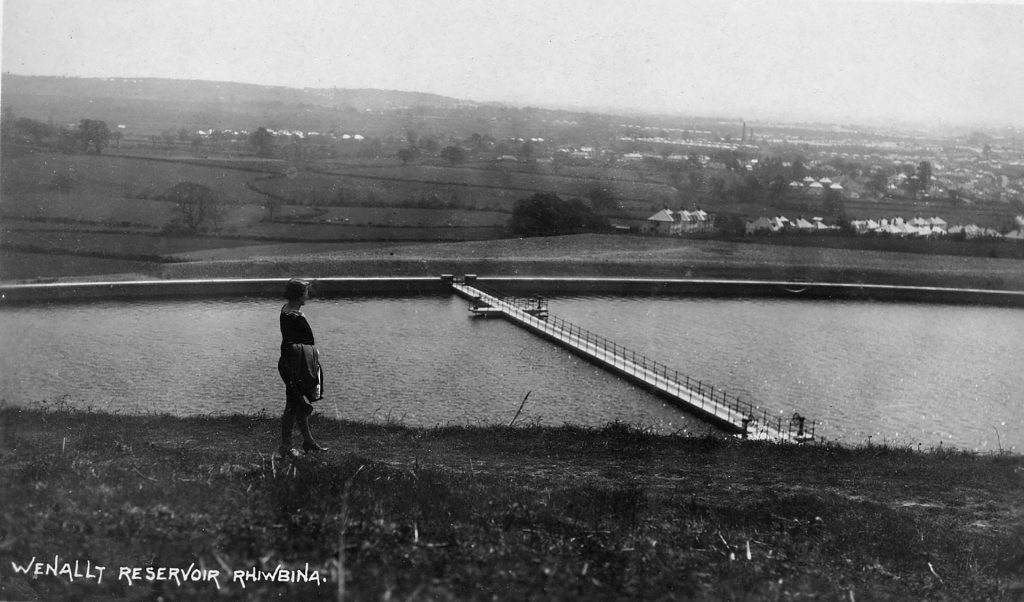Rhiwbina Reflections
These memories of our village, written in the 1990s, depicts a Rhiwbina of endless summers and carefree days
My childhood memories take me back to the 1920s, back to a very different Rhiwbina to the one we know today.
Cars were so few and far between that one could cross the main road without having to look either way. Rhiwbina Garden Village was not many years old and the main event of the Garden Village year was the Rhiwbina Village Fêtes. This was always held in June and the Saturday chosen was always gloriously sunny.
The fête took place on the village green with the children intertwining ribbons as they danced around the Maypole. There were numerous stalls such as Hoop-la, Coconut Shies, and plenty of races. These included the Egg & Spoon, the Three-legged, and the Wheelbarrow races. My happiest memory here was winning a canary for my youngest sister that she so longed for by throwing a ring right over a yellow object on the table.
I remember shops being on the west side only of Heol-y-Deri with Thomas & Evans the grocer being on the corner where the Principality Building Society is today. This was a good old-fashioned grocer’s shop with personal attention. Here, the butter came in boxes to be weighed and shaped with butter pats by the assistants.
The sugar came in sacks and the tea in tea-chests, all having to be weighed up for each customer’s individual needs. There was always an errand boy with a basket on the front of his bike, willing to deliver your weekly order free of charge. A few shops further on was the attractive fruit and vegetable shop, then owned by relatives of David Broome – the champion horseman and show jumper.
Going further north, we came to Smarts Tea Gardens. This was a favourite spot for families having a day out in the country. Open-top buses terminated here in those days and parents called at the Tea Gardens to have an afternoon tea under rose-covered, rustic arches; meanwhile their children played happily on the swings and see-saws after devouring their pop and ice-cream. Sadly, these Tea Gardens were soon to close to make way for the garage and workshops as cars became more popular.
Still working our way northwards, we come to the Deri Farm, which has since been demolished to make way for the Deri pub. The farmhouse was surrounded by fields with cattle grazing right down to where the Mormon Church now stands. Perhaps this accounts for some of the beautiful lawns that now surround the church!

Turning right at the Deri, we carry on up Wenallt Road to the Wenallt Reservoir. Here are some of my most vivid memories.
My father was the engineer in charge of the building of this reservoir. Heavy goods vehicles as we know them today were not around then so a way had to be found of carrying all the heavy materials needed, such as concrete, sand, and gravel up to the Wenallt to build the foundations, floors, and walls for this construction.
To overcome this transport problem, an overhead cable railway was installed, connecting Whitchurch station with the Wenallt. The building materials were then sent in wagons to the sidings at Whitchurch station where buckets on this overhead railway were filled and carried non-stop from Whitchurch to the Wenallt. Here, they were emptied and returned to Whitchurch station immediately to be refilled and sent back to the Wenallt.
This project took some years to complete and when it was finished, my father took on the responsibility of both the Wenallt reservoir and the filter beds and reservoirs on Rhiwbina Hill.
This was before the Pantmawr estate was built. The only house in those days was the Pantmawr Farm, surrounded by fields with beautiful hills in the background. The farmer always allowed our chapel to have one of his fields for us to have our Whitsun treat. I remember feeling very privileged one year to be chosen with a couple of other girls to sing a few hymns at his wife’s bedside; she was not well enough to join us in the field that year. Our reward for this was an extra slice of Whitsun treat ‘fruitcake’ and an extra glass of pop.
Our home, known as Waterworks House, on Rhiwbina Hill, was a truly happy and interesting place to live. The grounds were extensive with orchards, lawns, and beautiful flower beds. This gave us plenty of room to play all of the games we wanted. I remember high days and holidays were very often spent having pony trap rides with our parents to local beaches. Unfortunately, a lot of these gardens had to be taken away to make way for the M4 motorway.

The necessary flow of water to supply Cardiff all those years ago was controlled by valves worked by hand, opening the valves wide each morning and closing them by about 75% each night. Another interesting feature that people would not be able to see from the road were the underground reservoirs because they were covered with well-kept lawns.
These reservoirs had to be cleaned out regularly and when they were emptied for this purpose, I was allowed to go down and see each one. I was very surprised to see that there were nine rows of nine columns marking 81 columns in all, supporting each reservoir’s roof.
During the intervening years, Rhiwbina and Cardiff expanded to such an extent that these filter beds and reservoirs were no longer adequate to meet the demands of the people and are now used for storage purposes. The main supply of water for our city now comes from the Brecon and Llandegfedd Reservoirs.
All of these years of happy childhood memories were shared with the most kind and caring parents one could wish to have.
Words by the late aunt of Denise from Rhiwbina

